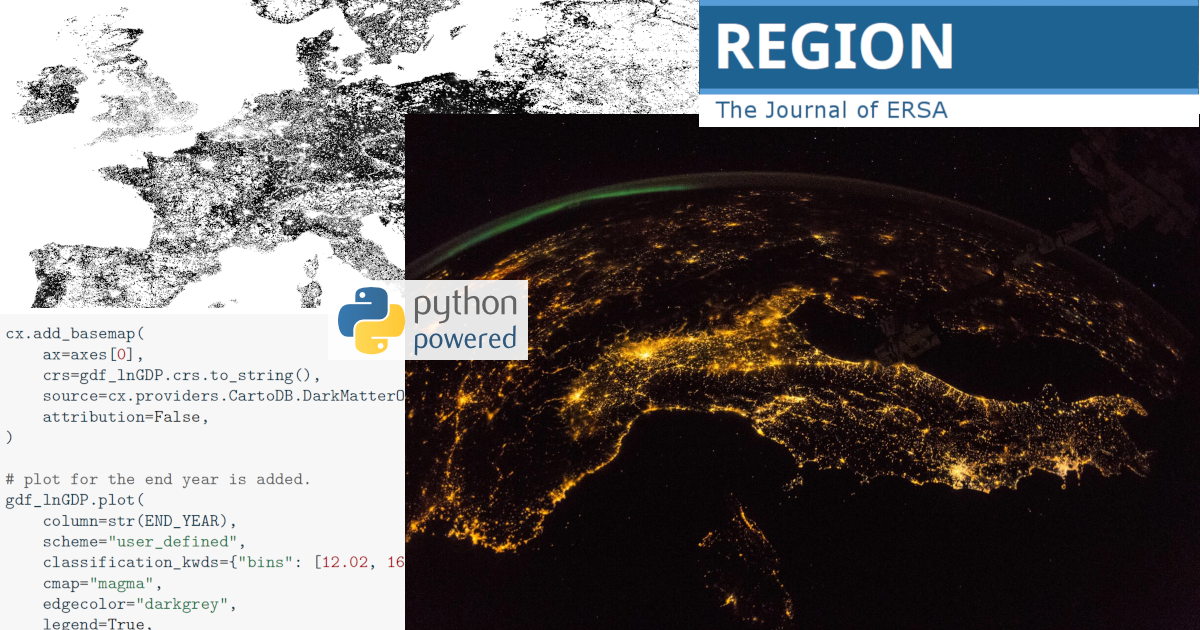Exploring economic activity from outer space: A Python notebook for processing and analyzing satellite nighttime lights
DOI:
https://doi.org/10.18335/region.v11i1.493Abstract
Nighttime lights (NTL) data are widely recognized as a useful proxy for monitoring national, subnational, and supranational economic activity. These data offer advantages over traditional economic indicators such as GDP, including greater spatial granularity, timeliness, lower cost, and comparability between regions regardless of statistical capacity or political interference. However, despite these benefits, the use of NTL data in regional science has been limited. This is in part due to the lack of accessible methods for processing and analyzing satellite images. To address this issue, this paper presents a user-friendly geocomputational notebook that illustrates how to process and analyze satellite NTL images. First, the notebook introduces a cloud-based Python environment for visualizing, analyzing, and transforming raster satellite images into tabular data. Next, it presents interactive tools to explore the space-time patterns of the tabulated data. Finally, it describes methods for evaluating the usefulness of NTL data in terms of their cross-sectional predictions, time-series predictions, and regional inequality dynamics.

Published
How to Cite
Issue
Section
License
Copyright (c) 2024 Ayush Patnaik, Carlos Mendez

This work is licensed under a Creative Commons Attribution 4.0 International License.
REGION is an open journal, and uses the standard Creative Commons license: Copyright We want authors to retain the maximum control over their work consistent with the first goal. For this reason, authors who publish in REGION will release their articles under the Creative Commons Attribution license. This license allows anyone to copy and distribute the article provided that appropriate attribution is given to REGION and the authors. For details of the rights authors grant users of their work, see the "human-readable summary" of the license, with a link to the full license. (Note that "you" refers to a user, not an author, in the summary.) Upon submission, the authors agree that the following three items are true: 1) The manuscript named above: a) represents valid work and neither it nor any other that I have written with substantially similar content has been published before in any form except as a preprint, b) is not concurrently submitted to another publication, and c) does not infringe anyone’s copyright. The Author(s) holds ERSA, WU, REGION, and the Editors of REGION harmless against all copyright claims. d) I have, or a coauthor has, had sufficient access to the data to verify the manuscript’s scientific integrity. 2) If asked, I will provide or fully cooperate in providing the data on which the manuscript is based so the editors or their assignees can examine it (where possible) 3) For papers with more than one author, I as the submitter have the permission of the coauthors to submit this work, and all authors agree that the corresponding author will be the main correspondent with the editorial office, and review the edited manuscript and proof. If there is only one author, I will be the corresponding author and agree to handle these responsibilities.




